Innovation is the maximum expression of what the modern period was. In itself, this movement brought with it one of the greatest contributions to the art of the XNUMXth century. And that is why we have decided to let you know the main features of this movement on art, especially on the modernist painting and more.
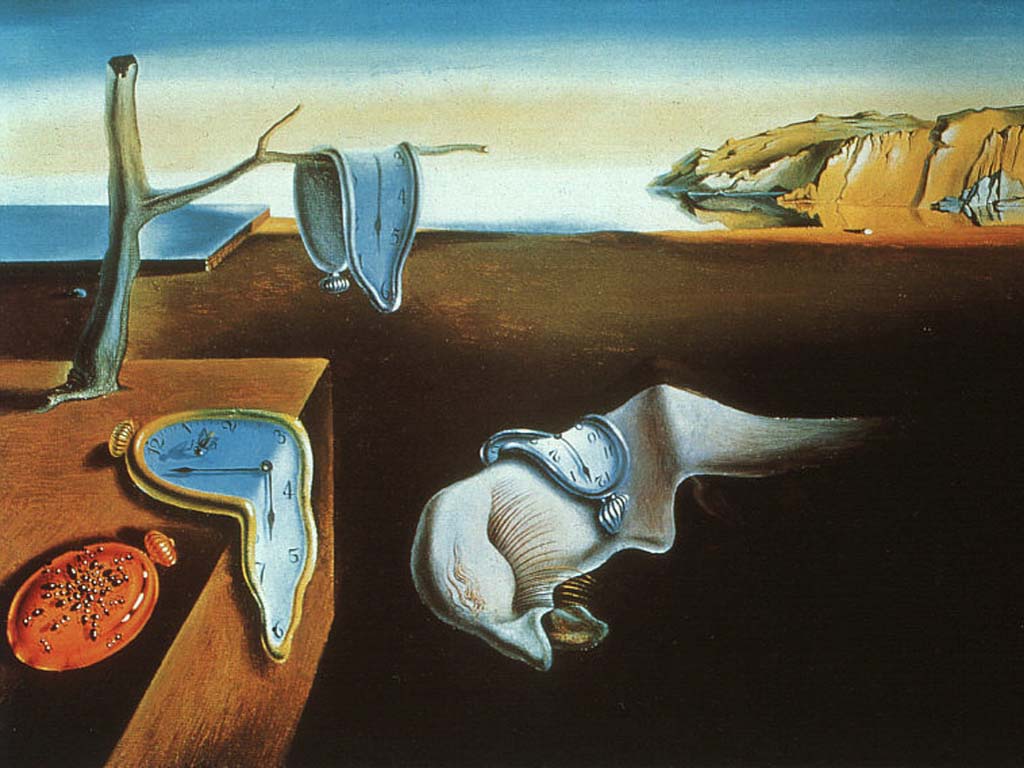
Modernism and modernist painting
Modern art is a term used to describe a period of art history that runs roughly from the 1860s to the 1970s. The term denotes the style and philosophy of art produced during that time. Its roots lie in the work of late XNUMXth century artists such as Van Gogh, Cezanne, and Gauguin, whose training and early careers were based on a traditional painting style.
However, in the late XNUMXth century many artists began to move away from realistic narrative in subject matter and style, moving towards a more abstract style of painting that addressed their new aesthetic ideas, this would later be known as modernist painting. So the term "modernist or modern" is associated with art, distancing this artistic expression from traditional painting.
Modern artists played with unexplored ways of seeing their subjects and new ways of using traditional painting materials. These challenged the idea that art should represent the world realistically, experimenting with the expressive use of color, new techniques and non-traditional materials that are now considered the hallmark of modernist art and painting.
The beginning of the XNUMXth century brought even more experimentation. The Fauve artists (Fauvism), they began to paint expressive “wild” landscapes and cubist artists began to deconstruct subjects into solid forms, rendering them almost abstract.
These art movements and those that followed them until the XNUMXth century, were based on new ways of thinking about, seeing and exploring art, making the very definition of what modern art is. Where modern art is a term used to describe an artistic movement and a period of art history, modernism is the name of the philosophical movement that emerged at the same time.
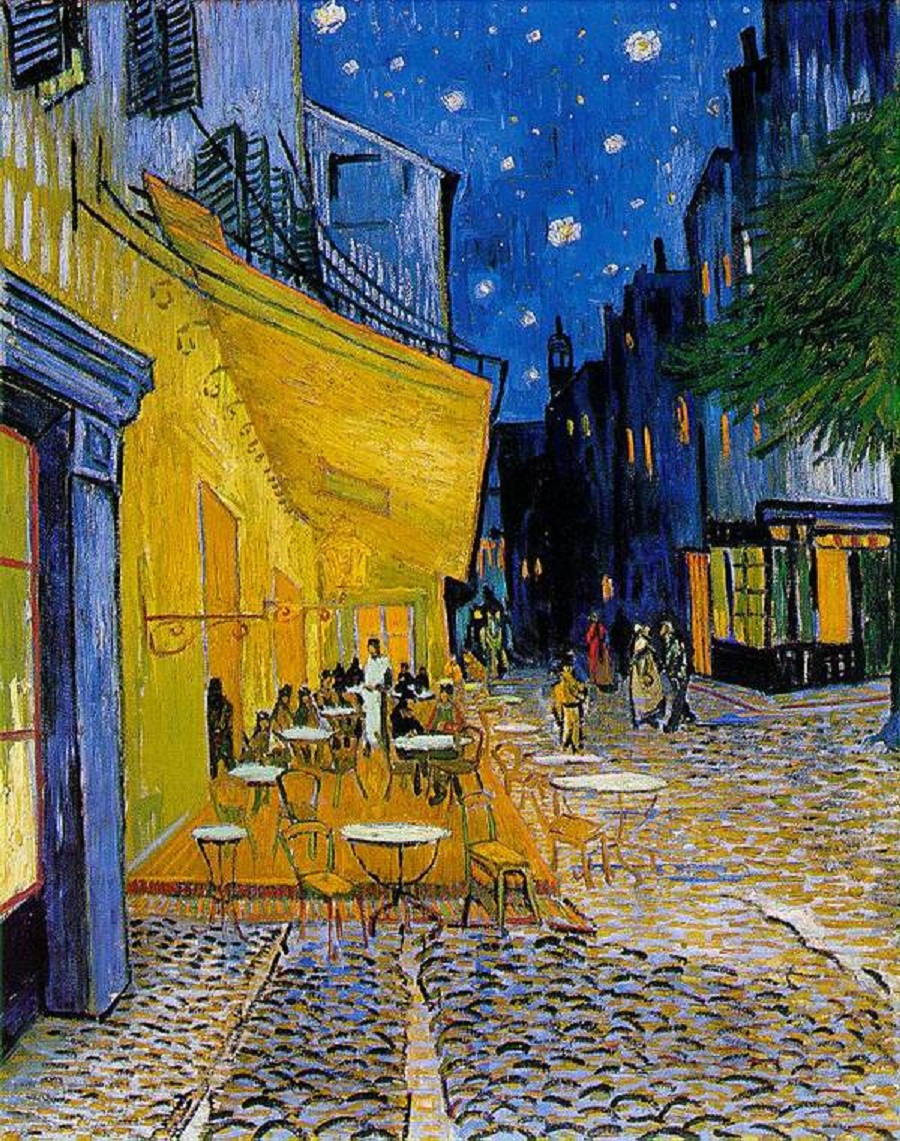
The Industrial Revolution, the rapid growth of urban areas, and new forms of transportation contributed to the development of the philosophy of modernism that rejected traditional forms of thought, art, religion, and social behavior. Modernism and modern art are interrelated and coexisted: the theories of modernism feed the thinking of artists, and modern art promotes philosophy in actual practice.
Characteristics of the modern in the arts
Although there is no single characteristic that defines "modern art", it stood out for a number of important characteristics, such as the following:
New types of art
Modern artists were the first to develop the art of collage, various forms of assemblage, a variety of kinetic art (including mobiles), various genres of photography, animation (drawing plus photography), land art or embankments, and performance art.
Use of new materials
Modern painters planted objects such as newspaper clippings and other items on their canvases. Sculptors used found objects, such as Marcel Duchamp's "readymades," from which they created works of junk art. The assemblages were produced with the most common everyday items, such as: cars, watches, suitcases, wooden boxes and other items.
expressive use of color
The currents of modern art such as Fauvism, color field painting and expressionism were the first to detonate color in a quite significant way.
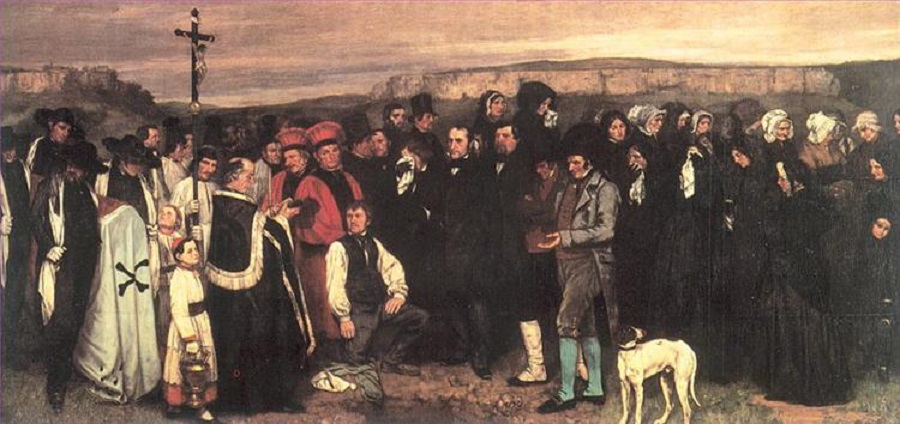
New techniques
Chromolithography was devised by poster artist Jules Cheret, automatic drawing was defined by surrealist artists, in the same way as Frottage and Decalcomania. The gesture painters conceived of action painting. Meanwhile, pop artists introduced "Benday dots" and screen printing into fine art. Other movements and schools of modern art that also introduced new techniques in the execution and elaboration of painting.
Modernist art movements
The beginnings of modernist painting cannot be restricted, but there is general agreement that it began in XNUMXth-century France. The paintings of Gustave Courbet, Edouard Manet and the Impressionists represent a deepening rejection of the prevailing academic heritage and a search for a more naturalistic representation of the visual universe.
The successors can be seen as more modern in their repudiation of traditional practices and themes and in their expression of a more abstract personal vision. Beginning in the 1890s, a series of diverse movements and styles emerged, which are at the core of contemporary art and represent one of the high points of Western visual culture. These modern movements include:
- neo-impressionism
- Symbolism
- Fauvism
- Cubism
- Futurism
- Expressionism
- Suprematism
- Constructivism
- metaphysical painting
- From Stijl
- Hobbyhorse
- Surrealism
- Social realism
- Abstract Expressionism
- Pop art
- Op art
- Minimalism
- neoexpressionism
Regardless of the tremendous variety seen in these movements, many of them are characteristically contemporary in their investigation of the potentials inherent in the pictorial medium itself to express a religious response to the varied conditions of life in the XNUMXth century and beyond.
These conditions include accelerating technological change, the growth of scientific knowledge and understanding, the apparent irrelevance of some standard sources of beliefs and values, and the expanding awareness of non-Western cultures.
Chronology and evolution
The development of modern art in all its representation (modernist painting and more), was presented and evolved in the world through different forms and causes, which will be detailed chronologically below:
1870-1900
Although the last third of the XNUMXth century was somewhat dominated by the new Impressionist style of painting, there were actually several pioneering strands of modern art and modernist painting, each with its own particular approach. These included:
- Impressionism (accuracy in taking the effects of sunlight).
- Realism (content – theme).
- Academic art (real images of classical style).
- Romanticism (state of mind).
- Symbolism (enigmatic iconography).
- Lithographic poster art (bold motifs and colors).
The last decade of this period saw a series of revolts against the academies and their salons in the form of the Secession movement, while the late 1890s saw the decline of nature-based art, like impressionism, which would soon lead to a rise in more serious message-based art.
1900-14
Almost in everything, this was the most impressive time of modern art, when everything was still potentially viable and when the "gadget" was still visualized only as an ally of man. Paris artists produced a number of new styles, including: Fauvism, Cubism, and Orphism. While German artists launched their own modernist expressionist school of painting.
All of these progressive movements rejected traditionalist attitudes towards art and sought to defend their own particular agenda of modernism. Thus, cubism wanted to prioritize the formal attributes of painting, while futurism preferred to emphasize the possibilities of the machine, and expressionism defended individual perception.
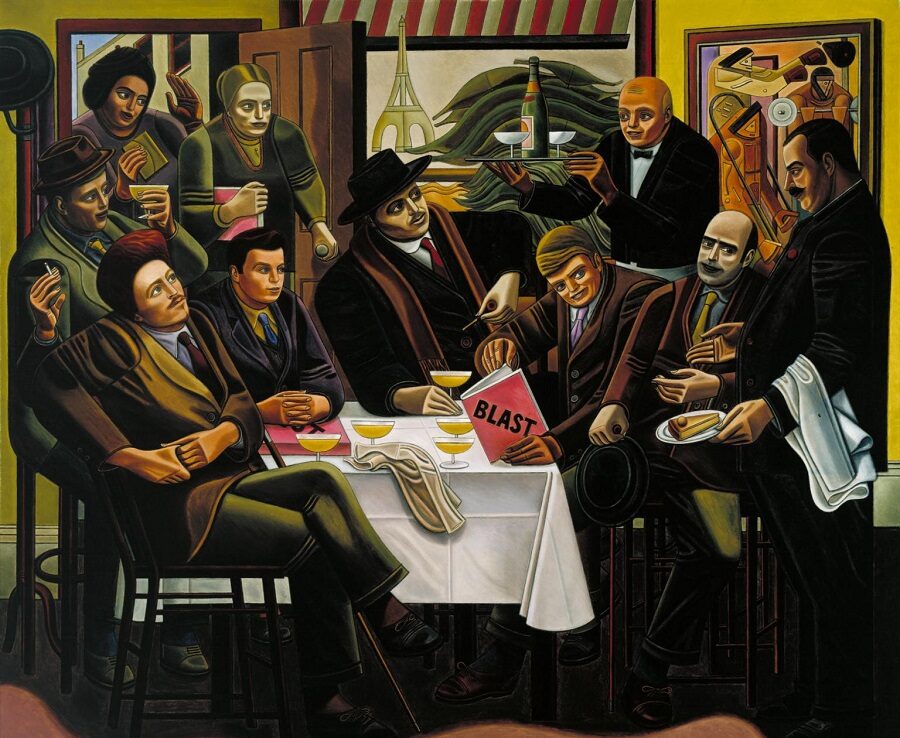
1914-24
The carnage and destruction of the Great War changed things completely. In 1916, the Dada movement was launched, filled with a nihilistic urge to subvert the value system that had brought about Verdun and the Somme. Suddenly, representational art seemed obscene. No image could compete with photographs of the war dead. Artists had already increasingly turned to non-objective art as a means of expression. Abstract art movements of the time included:
- Cubism (1908-40)
- Vorticism (1914-15)
- Suprematism (1913-18)
- Constructivism (1914-32)
- Stijl (1917-31)
- Neoplasticism (1918-26)
- Elementarism (1924-31)
- Bauhaus (1919-33)
- The later St Ives School
Even the few figurative movements were clearly avant-garde, as shown in metaphysical painting (1914-20).
1924-40
The years of peace between the wars remained marked by political and economic difficulties. Abstract modernist painting and sculpture remained prominent, as art distinctive to reality remained largely out of fashion.
Even the realist wing of the surrealist movement, the largest movement of the period, could not handle more than a fantasy reality style. Meanwhile, a more sinister reality was emerging on the continent, in the form of Nazi art and Soviet agit-prop. Only Art Deco, a rather elegant design style aimed at architecture and applied art, expressed any confidence in the future.
1940-60
The art world was transformed by the catastrophe of World War II. To begin with, its center of gravity shifted from Paris to New York, where it has remained ever since. Almost all future world record prices would be achieved in the sales rooms of Christie's and Sotheby's in New York. Meanwhile, the unspeakable phenomenon of Auschwitz had undermined the value of all realist art except the Holocaust art of those affected.
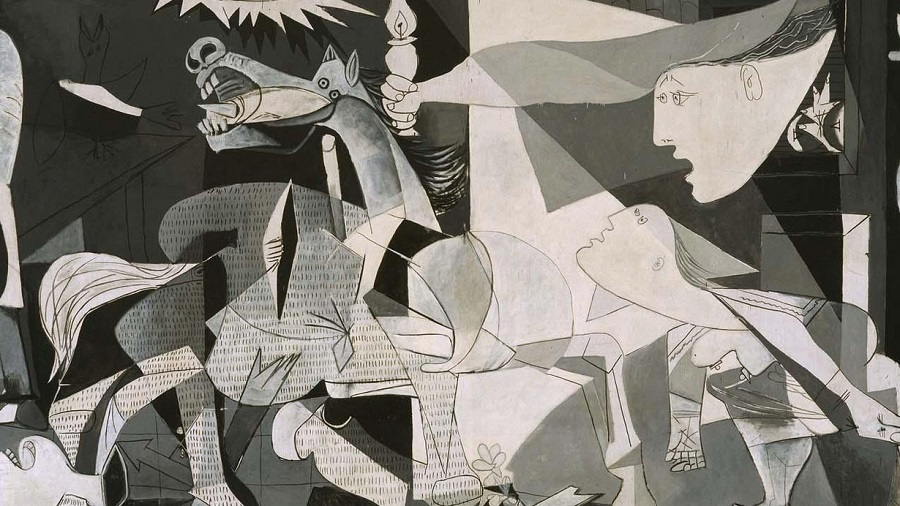
As a consequence of all this, the next great international movement, abstract expressionism, was created by American artists of the New York School. Indeed, for the next 20 years, abstraction will dominate, as new movements emerge. These included:
- Informal art.
- Action painting.
- Gesturalism.
- Smoking.
- Color field painting.
- lyrical abstraction.
- Hard Edge Paint
- COBRA, a group distinguished by its children's iconography and its expressive lines.
During the 1950s, other more audacious types of styles germinated, such as: kinetic art, Nouveau Realism and Neo-Dada, all of which manifested a progressive uneasiness with the narrow arts industry.
1960
The explosion of popular music and television was reflected in the Pop-Art movement, whose pictorial representations of Hollywood celebrities and popular culture iconography celebrated the success of mass consumerism in the United States. It also had a fresh, modern feel, which helped dispel some of the early 60s gloom associated with the 1962 Cuban crisis. Which in Europe had fueled the success of the Fluxus movement led by:
- George maciunas
- Joseph Beuys
- Nam june paik
- Wolf Vostell
Down-to-earth pop art was also a welcome counterpoint to the more erudite abstract expressionism, which had already begun to fade. But the 1960s also saw the rise of another high-profile movement known as Minimalism, a form of modernist painting and sculpture purged of all external references or gestures, unlike the emotionally charged language of abstract expressionism.
Modernism in the graphic arts
By the end of the XNUMXth century, artists were getting tired of traditional and conservative art forms. In Vienna, a group of artists led by Gustav Klimt called themselves the Vienna Secession and cut themselves off from the art institutions of the Austrian capital at the time.

The group explored uncharted territories in form, composition, and expression, sparking similar experiments in other nearby countries such as France and Germany. Rich modernist paint strokes and realism are translated into flat colors and stylistic typography, expressions that would pave the way for graphic art.
By the time World War I began, graphic design was already being used for commercial, corporate, and aesthetic purposes. His new role would be political, used in posters and propaganda during the war.
Advances in mass color printing enabled the efficient production of messages to raise funds, encourage enlistment, and boost morale. The turmoil and challenges faced in both world wars ultimately inspired the first wave of true modernism within graphic design.
In Europe and America, graphic designers drew inspiration from broader art movements such as Cubism, Futurism, De Stijl, and Surrealism. In Germany, the Bauhaus movement also had a significant impact on graphic design. With its bold lines, primary colors, and disturbing white space, it was as striking in the 2-D format as it is in architecture or sculpture.
Ultimately, modernist design was defined by abstract expression, bold type, and primary colors and shapes. These designers approached work objectively, emphasizing the rational over the expressive (and emphasizing the classic modernist belief that form follows function).
When the Nazis came to power in the 1930s, modernist experiments in all practices were denounced, and many artists, architects, and designers immigrated to the United States. Although modernist design was interrupted in its growth, it remains one of the most impactful movements in the history of graphic design.
Art Nouveau jewelry, glassware, ceramics, furniture and wrought iron
The modernist jewelers of the United States who practiced their craft from the 1930s to the 1960s were quite emphatic in their rejection of styles that had come before. Victorian jewelry was dismissed as too decorative, Art Nouveau pieces were seen as too demanding, and Art Deco aesthetics were seen as overly rigid. These jewelers felt that they had more in common with the modern painters, sculptors, and other artists of the day.
His ambitious goal was to create unique works of art that people could use. One of the early champions and practitioners of the form was Sam Kramer, who, like many of his contemporaries, lived, worked, and sold his creations in New York City's Greenwich Village. Kramer worked primarily in silver, but was also adept at making copper rings, earrings, and pins and found artifacts including elk teeth, buttons, fossils, and ancient coins.
On occasion, Kramer used semi-precious stones such as garnets or opals in his surreal, geometric, or biomorphic pieces. Another unofficial leader of the modernist jewelry movement was Kramer's neighbor Art Smith. His jewelry ranged from simple silver neck rings to biomorphic pieces that are based on African motifs.
While Smith made small pieces like cufflinks and earrings, many of his best works were large enough to envelop the body, as if the human form were merely the backdrop for his creations.
His vintage copper wristbands, especially the "jazz" handcuffs with musical notes applied to their outer surfaces, are highly collectible. Boomerangs, straight lines intersecting curves, and atomic age shapes typify Ed Wiener's work.
Sometimes a pair of silver earrings that looked like warped hourglasses were adorned with a single pearl. Other times, a cat's eye agate was placed in the center of a piece, as if to give its inanimate objects the appearance of a human face.
Another Greenwich Villager whose vintage modernist jewelry is highly regarded was Paul Lobel, who designed adorable silver pins and bracelets, as well as glass, furniture and silverware. Outside of New York there was Betty Cooke, working in the Bauhaus mode in Baltimore.
Her jewelry was made up of geometric shapes and was characterized by a strong sense of order, which she would deliberately disrupt by the sharp placement of pearls, small blocks of wood, or even unfinished stones such as quartz.

Another Bauhaus acolyte was Margaret De Patta, whose work reflected the profound influence of Bauhaus master László Moholy-Nagy, with whom she studied. Meanwhile, in San Francisco, Peter Macchiarini looked to African masks and Cubism for inspiration. Brass, copper, and silver were common materials, along with opals, agates, and wood.
In Scandinavia during the 1940s and 1950s, a parallel movement was taking place. Henning Koppel and Nanna Ditzel were two notable designers for Georg Jensen, whose silver teardrop and amoeba necklaces combined the perfection of Danish goldsmithing with an interest in natural, even primitive forms.
Later, in XNUMXs Finland, Bjorn Weckstrom married solid silver and bits of polished acrylic to create rings, bracelets, and pendants that were both space-age and organic. Other areas explored by modernist artists were the production of ceramics, furniture, glassware, and metallurgy. Among the most outstanding artists, the following can be mentioned:
- Louis Comfort Tiffany (designer)
- Émile Gallé (ceramist and glassmaker)
- Antonin Daum (glazier)
- Lluís Masriera (jeweller)
- Carlo Bugatti (furniture designer)
- Louis Majorelle (furniture designer)
- Gustave Serrurier-Bovy (furniture designer)
- Jacques Grüber (decorator and painter)
- Jules Brunfaut (architect and decorator)
- Auguste Delaherche (ceramist)
- Georges de Feure (painter and decorator)
modernist painting
The modern period of art history was a great spectator of the breakdown of traditional limitations, both in terms of form (the appearance of art) and content (the subject matter). This happened in all branches of art, with painting at the forefront. Indeed, painters had led aesthetic innovation in Europe since the end of antiquity.
The most prominent innovation in form was the rise of increasingly distorted styles of painting, culminating in the birth of abstract art. In terms of content, modernist painting tends to present ordinary, everyday scenes, as opposed to traditional "high" subjects (biblical, mythological, historical).
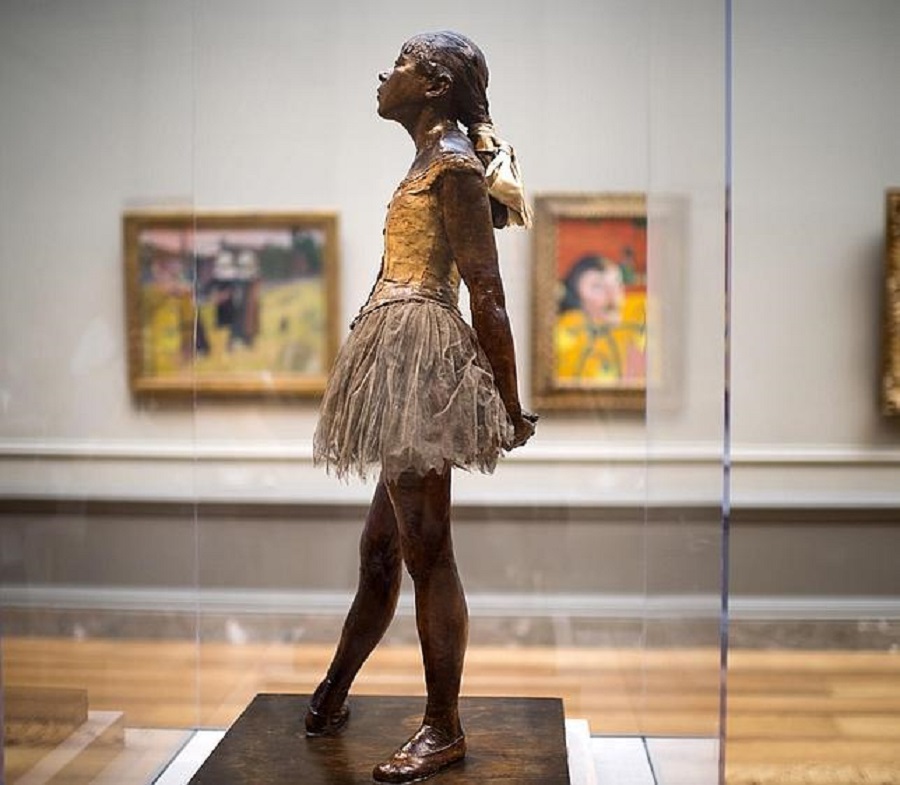
The birth of modernist painting is often traced to realism, a French movement that depicted scenes of everyday life in a physically realistic way. Although realistic scenes of daily life can be traced back to Renaissance Low Country painting, the Modern Realism movement took a new approach by focusing on harsh realities including: poverty, homelessness and working conditions. oppressive
This movement was led by Gustave Courbet, whose most notable works are "The Stone Breakers" and "Entierro de Ornans". Although distortion, not realism, would become the dominant trend in modernist painting, realist art has continued to flourish to this day. Much of this art is, like the original French movement, socially conscious.
The next major phase of modernist painting was Impressionism, a fast, sketchy style that captures the overall impression of a scene (as opposed to precise details). In particular, Impressionism attempts to capture the momentary effects of light, primarily through adjacent brush strokes of bright, contrasting colors (which enhance the brilliance of both colors, thus producing a glowing effect).
The Impressionists were the first group of artists to paint primarily on location, rather than drawing on location and painting in the studio. Impressionism's roots lie in the works of Édouard Manet, who painted in a fairly realistic style. However, Manet caused controversy by only loosely adhering to perspective, rendering backgrounds in a simplified schematic fashion, and flattening the surfaces of objects into areas of solid color (rather than modeling objects with smooth shading).
These tendencies first became clearly apparent in Luncheon on the Grass, Manet's most famous early painting. They become more pronounced in his later works, including: "A Bar at the Folies-Bergère", often considered his masterpiece. The extension of Manet's style led to Impressionism, as sharp detail and realistic modeling were abandoned in favor of rapid brushstrokes and splashes of solid color.
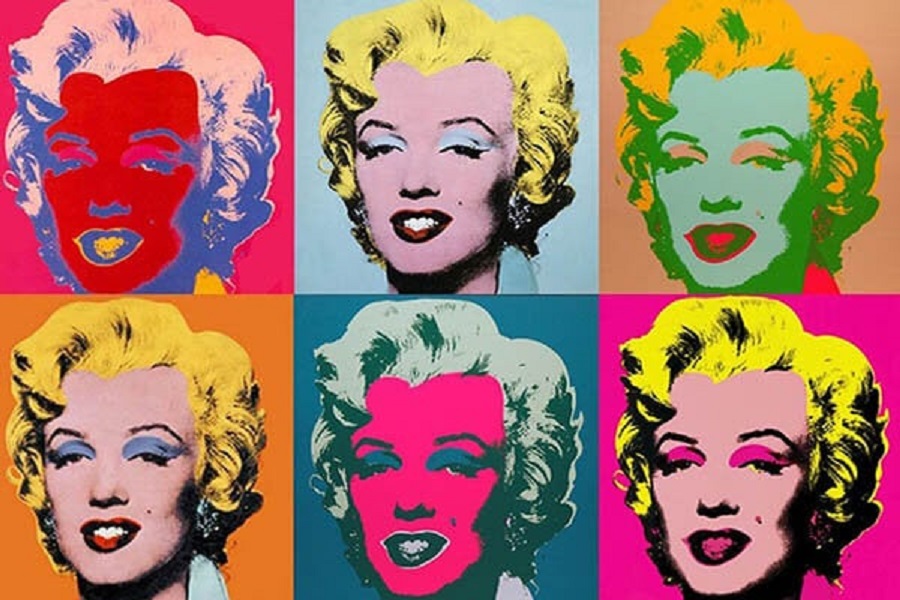
The most prominent Impressionist was Claude Monet, who worked primarily on landscapes and seascapes. His early works include many seaside paintings around his hometown of Le Havre, including "Impression, Sun Rising." When this work was criticized as a “mere impression”, the name of the style was secured.
Sometimes Monet would return to a subject multiple times, at different times or seasons, to capture a full range of lighting conditions. This approach culminated in the famous Water Lily Series, which features many treatments of the water lily pond outside the house to which Monet retired.
Impressionism encompasses many of the most recognized names in painting. Along with Monet, Impressionist landscape painting was led by Sisley and Pissarro. The most prominent figure painters of the Impressionist style were:
- Renoir
- Morisot
- Of gas.
The Impressionists, who slightly blurred and simplified reality, were followed by a group of artists who took distortion much further: the Post-Impressionists, who discovered that striking new emotional effects were possible if the shapes and colors of reality were transformed more spectacular.
Some Post-Impressionists pursued geometric distortion (in which the world is compressed into geometric shapes, creating a sense of rigidity and control), while others explored fluid distortion (in which the world is skewed in a fluid and organic way). Both types of distortion (especially fluid) often present dramatically unrealistic colors.

The main pioneer of geometric distortion was Paul Cézanne, who smoothly simplified the physical features of a scene into geometric shapes. This resulted in landscapes (his preferred subject matter) with a somewhat rigid, blocky appearance.
The most important pioneer of fluid distortion was Vincent van Gogh. (Other important figures include Gauguin, Munch, and Toulouse-Lautrec.) Van Gogh's style is fluid and colorful, with a particular emphasis on yellow. The Starry Night may be his most famous work.
While Georges Seurat developed a very distinctive form of post-impressionism: pointillism, in which scenes are rendered in many dots of a single color. The most famous pointillist work is "Sunday Afternoon" which reflects the island of La Grande Jatte.
modernist sculpture
Modern sculpture is historically defined as sculpture beginning with the work of Auguste Rodin and ending with the advent of pop art and minimalism in the 1960s. Alex Potts' 2001 discussion of the historiography of modern sculpture is comprehensive for an understanding of the media, period, and methods used by key artists.
While it is now seen as cliché to start the modernist movement in sculpture with the work of Rodin, in his work one begins to see trends that will become characteristic of modern sculpture, such as a new interest in the fragment, in particular the body.

As well as, a surface treatment and expressive surface detail, an attention to movement, a symbolic fusion of a figure's inner expression and its outer representation, or what Constantin Brancusi called "essence." And a greater consideration of abstraction, fragmentation and non-representation in sculptural objects, that is, a conscious departure from realism and academic idealism.
Sculptors during this period also placed an emphasis on design, form, and volume over the representation of a specific subject. The use of materials that are not traditionally used in the final sculptural concepts became more evident, such as the use of: clothing, textiles and other mixed media. As seen in the "Little fourteen-year-old ballerina" made by Edgar Degas between the years 1878-1881, it is currently located in the National Gallery, Washington.
The fusion of human and mechanical elements is observed during the period of the Machine Age, as in the works of Umberto Boccioni and Jacques Lipschitz, in addition to the distortion and fragility that appear in works of the interwar period, as in the works by Medardo Rosso and Alberto Giacometti.
The influence of art outside of the Western, that is, European, tradition became very influential for sculptors at the turn of the century and can be seen in the sculptures of Paul Gauguin and Pablo Picasso. Artists such as Naum Gabo and Antoine Pevsner began to use materials that had not been used for fine art sculpture in the immediate past and newly invented materials such as plastics.
The materials that had been used in the past became more important in modern times, such as: aluminum with Isamu Noguchi, electricity for lights in sculpture and for motorized movement by Camille Claudel, iron by Julio González, lead by Aristide Maillol, steel and welded metals by David Smith and Julio González, wood by Constantin Brancusi and found objects by Louise Nevelson.
Although there are examples of moving sculptures made by previous sculptors such as: Antonio Canova and Lorenzo Bartolini. Which we would think of as kinetic sculpture today, both the suggestion of movement in sculpture and actual moving sculptures became more prominent during the first half of the XNUMXth century. Alexander Calder and László Moholy-Nagy implemented a greater use of movement technology in their works in the second half of the century.
The tension and reaction between the positive image and the negative space surrounding a work of art also played a significant role, and this can be seen especially in the early work and "space drawings" of Giacometti, Picasso and David Smith, as well as in sculpture by Jean Arp, Henry Moore and Barbara Hepworth.
The above mentioned artists, along with many others, including: Alexander Archipenko, Raymond Duchamp-Villon, Max Ernst, Henri Gaudier-Brzeska, Gaston Lachaise, Henri Laurens and Aristide Maillol, made a significant break with the sculpture of the recent past, liberated it from their reliance on anatomy and their servitude to architecture, and took the medium further than any generation since the early Renaissance sculptors.
Modern architecture
Modern architecture grew out of the rejection of revivals, classicism, eclecticism, and all adaptations of earlier styles to the building types of industrialized society in the late XNUMXth and XNUMXth centuries. Furthermore, it grew out of attempts to create architectural forms and styles that could use and reflect the newly available building technologies of structural iron and steel, reinforced concrete, and glass.
Until the spread of postmodernism, modern structure also involved the rejection of the applied ornament and decoration characteristic of premodern Western buildings. The thrust of modern architecture has been a rigorous concentration on buildings whose rhythmic arrangement of people and forms establishes a geometric pattern in light and colour.
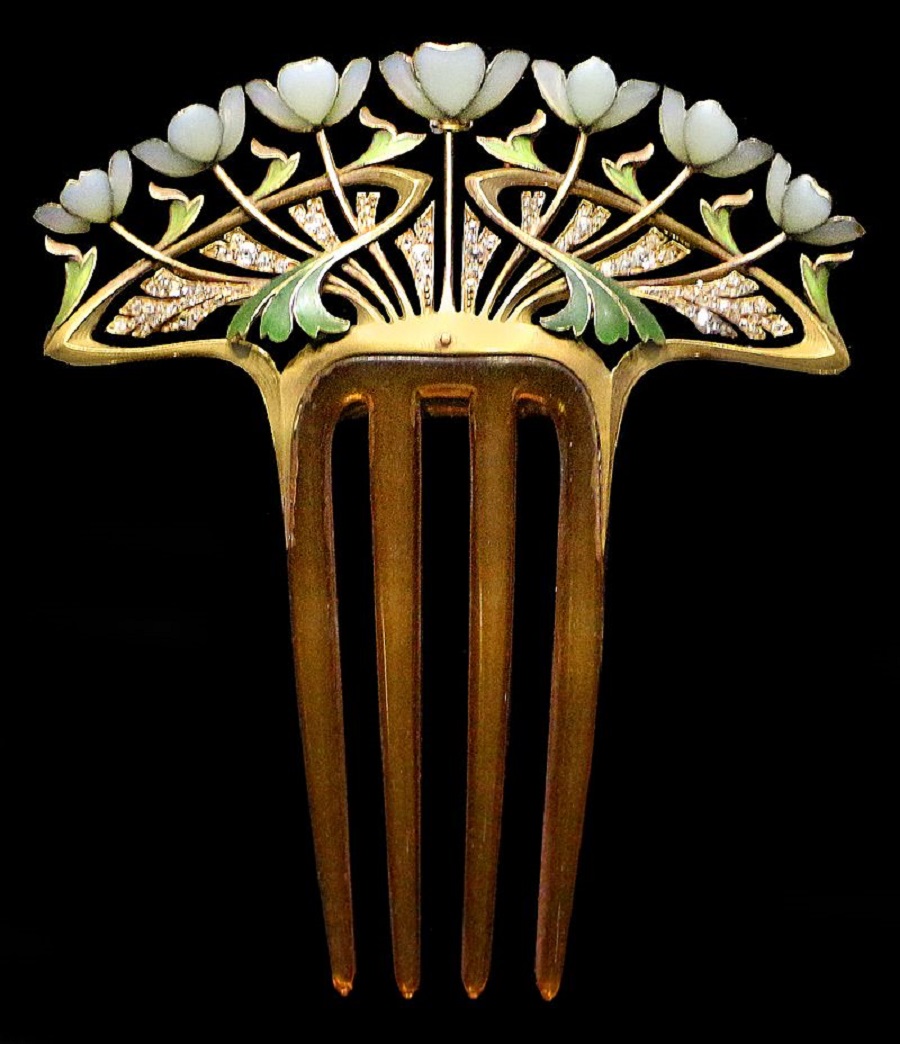
This development was closely linked to the new types of construction required by an industrialized society, such as office buildings that house corporate management or government management. One of the most important trends and movements of modernist architecture are:
- The Chicago School
- functionalism
- art deco
- art nouveau
- De Stijl, the Bauhaus
- The International Style
- The New Brutalism
- Postmodernism
modern artists
The history of modern art is the history of the greatest artists and their achievements. Modern artists have made efforts to express their views of the world around them using visual means. While some have connected their work to earlier movements or ideas, the overarching goal of every artist in the modern age was to advance their practice to a position of pure originality.
Certain artists established themselves as independent thinkers, venturing beyond what constituted acceptable forms of "high art" at the time, supported by traditional state academies and upper-class patrons of the visual arts. These innovators described a topic that many considered lewd, controversial, or even downright ugly.
The first modern artist to stand essentially alone in this sense was Gustave Courbet, who in the mid-1849th century tried to develop his own distinctive style. This was largely accomplished by his 1850-XNUMX painting, Burial at Ornans, which shocked the French art world by portraying the funeral of an ordinary man from a peasant village.
The Academy bristled at the depiction of dirty farm workers around an open grave, as only classical myths or historical scenes were the appropriate subject for such a large painting. Initially, Courbet was ostracized for his work, but he eventually proved highly influential to subsequent generations of modern artists. This general pattern of rejection and subsequent influence has been repeated by hundreds of artists in the modern era.

Below is a list of some of the most prominent artists of the modernist form of artistic expression:
- E
- Hippolyte blancard
- Paul Cézanne
- Salvador Dalí
- Max Ernst
- Paul Gauguin
- Vincent van Gogh
- Hector Guimard
- Wassily Kandinsky
- Raoul Francois Larche
- Jacques-Henri Lartigue
- Fernand Léger
- Henri Matisse
- Joan Miró
- Edvard Munch
- Pablo Picasso
- Piet Mondrian
- franz klein
- Paul Klee
- Frantisek Kupka
- Paul Strand
- charles sheeler
- Henry of Toulouse
- Lautrec
- Edouard Vuillard
If you found this article on modernist painting interesting, we invite you to enjoy these others: